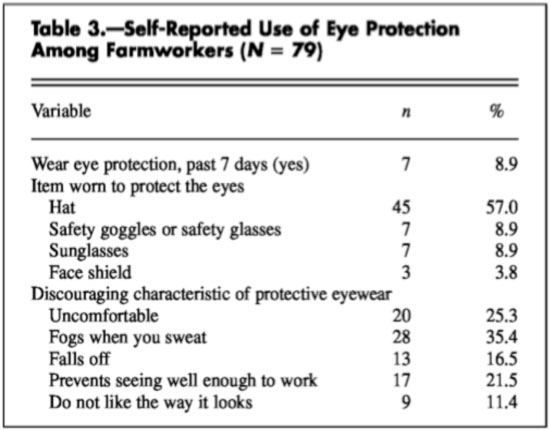Pruning Eye Injuries
Introduction – epidemiology
- Northeast Center chart review research at northeastern farmworker health centers identified eye injuries during pruning as a fairly common occurrence (Northeast Center, unpublished).
- National data also indicate agricultural eye injury (including foreign bodies) are more than two times higher than general workers (8.7 versus 3.8 per 10,000 workers).
- Farmworker eye health research from North Carolina (Quandt et al., 2008) shows that farmworkers have a high level of unmet need for both routine preventive eye care and treatment or correction of vision problems:
- Fair or poor eyesight was reported by 21.3%. A substantial number of farmworkers report difficulty with specific tasks requiring both near and distance vision.
- 5.1% reported wearing glasses or contact lenses.
- More than 11% reported difficulty in recognizing a friend across the street,
- 19.5% reported difficulty in reading.
- 20% reported multiple eye symptoms.
- < 1 in 10 wore eye protection
- 38% reported never having visited any eyecare professional.
- Protective eyewear use – not a substitute for reducing the hazard itself, but may be the worker’s only option in some situations. Research shows there are significant barriers to protective eyewear use:

From: Quandt, S. A., Feldman, S. R. , Vallejos, Q. M. , Schulz, M. R. , Verma, A., Fleischer, A. B., Arcury, T. A., (2008). Vision Problems, Eye Care History, and Ocular Protective Behaviors of Migrant Farmworkers. Archives of Environmental and Occupational Health, 63 (1), 13-16.
See also Eye injuries – Diagnosis and Treatment
Back to Pruning